
|   |

|   |
July 1, 2014 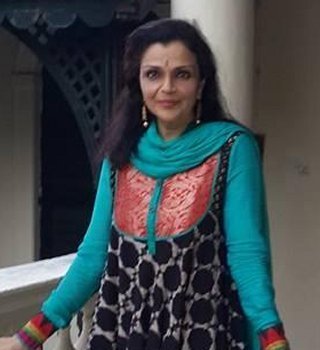
In what was perhaps the most horrific month of heat, when air conditioners broke down in protest and nothing seemed to make us good tempered, I busied myself rearranging my books, repairing dance costumes, archiving photographs, clearing up my e-mail list, re-recording favourite productions, being a yoga regular, reading poetry and some old classics while renovations were going on around me. Lots of sweat and dust worthy activity but no dancing. And I enjoyed the rest. June was the month that marked the 50th anniversary of my arangetram. Yes it was a sweaty summer evening, half a century ago, at my uncle’s wedding reception, at the now demolished Abbotsbury, that a wide eyed 9 year old danced for 2 ½ hours! And my grandfather warned my parents to stop my dance training since I would be UNFIT FOR MARRIAGE! Those were the days! It was after weeks of waiting and repeated coaxing that I dragged myself to the air conditioned theatre to watch the animated film KOCHADAIYAAN, starring the Tamil extra galactic super duper star Rajnikant. The reason was not the story (what story?), motion capture technology (childish and banal) or the actors (can anyone make Deepika Padukone look ugly? Well director Soundarya managed it! What a gross looking cross eyed DP!!). My motivation was to watch the choreography that carried the credits of Shobana and film regulars Brinda and Saroj Khan. What I saw reinforced the thoughts that have swirled around my mind for many months. What are we calling ‘classical dance’? Can the movements with Bharatanatyam and Mohiniattam mudras, with a smattering of Kalari lunges, Kuchupidi toe pointing and feet in perennial “twitter mode” make for a new form or just a pastiche of various forms to LOOK LIKE classical dance? 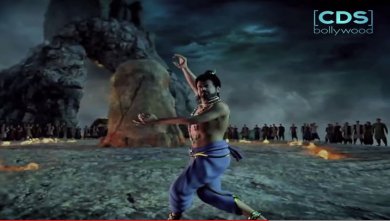 When Rajnikant’s character, as a Siva devotee, dances at midnight, his animated persona performs in a totally derivative form that is both recognisable and new. Kathakali jumps, knee twirls, mudras, adavus – all punctuated with the strident shouts of “SIVA SHAMBO!” A stark contrast to the fervent shouts of “NARAYANA” from Rajnikant’s contemporary and arch rival actor Kamal Hassan in DASAVATARAM. Kamal has studied Bharatanatyam and Kuchipudi and has also immersed himself in Kathak under the supervision of Birju Maharaj and Saswati Sen for his latest film ‘Viswaroopam’. While not using this column to compare the actors, the current “borrowing” of certain recognisable motifs from various classical styles, making them a melange for the Hollywood techies to further manipulate and then showcasing it as “classical dance” creates multiple layers of confusion. What then IS CLASSICAL? How did the choreographers of the 40’s and 50’s create for the camera? How did Ramaiah Pillai and Vempati Chinna Satyam make dances? Where is the source? Who inspires who and what is borrowed from where? Numerous derivations and cannibalisations are constantly occurring. Reminds me of the snake eating its own tail. The numerous summer dance workshops in India this year advertised being able to teach four or five styles of dance in 4 weeks? Hip Hop, jazz, flamenco, free style, Bharatanatyam, Kathak are all thrown into the melting pot to create dancers who are supple, athletic and hybridised. What passes as Bharatanatyam, Kuchupidi and Kathak are most interesting and should make for a separate study. Make of KOCHADAIYAAN dances what you will but cinema is a powerful messiah and the purists and pundits have to realise what they are up against. Definitions are changing and “classical” is a word that needs to be used more and more carefully. 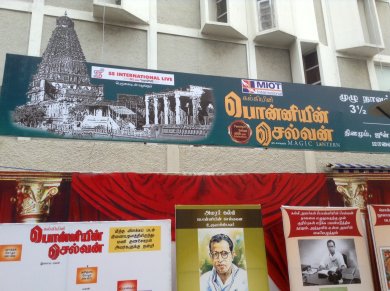 Disappointed as I was with KOCHADAIYAAN – a splitting headache and bad 3D glasses to boot – I was equally thrilled to sit in a house full Music Academy to watch a 4 hour long play. Presented by Magic Lantern, a Chennai theatre company using physical theatre, improvisations created after hours of workshops and devised movements, the featured play was the Tamil literary classic PONNIYIN SELVAN. Written by freedom fighter and social reformer Kalki Krishnamurthy, this story gripped an entire generation 50 years ago when it was serialised in the Tamil magazine called ‘Kalki’. My mother was among the thousands who waited for the postman (who was the undisputed hero in many a life since he delivered the issue each week). Historical fiction located in the time of the Chola dynasty (12th to 13th century) the play was a magnificently acted and produced production with flawless dialogue delivery, seamless entries and exits and superb ensemble acting. At a time when we moan the dumbing down of taste and ideas, PONNIYIN SELVAN proved that if you work hard and smart- there is an audience out there. Funded and produced by a real estate company that poured $100,000 dollars as seed money into the creative process, the play ran for 10 houseful days at the 1800 seater theatre, with tickets going for as high as Rs.3000. Standing room only, scalpers working overtime and a rapt crowd across generations poured into the hall and sat for the entire duration in admiration. I was particularly delighted with the presence of dancers Preethi Athreya, Gayatri Ramesh, Meera and Krishna (the last two being Chandralekha’s students) in main roles. All the women were strong, agile, martial arts trained and spoke the Tamizh dialogue superbly. The play is now touring Tamilnadu and dancers must watch this to see how classical dance and kalari training can actually nudge performing artistes to the next step. Spectacle it was. Done well with stunning success. The US of A is filled this summer with dancers and teachers from India. Conducting numerous workshops across the vast country, more than 25 artistes from India are teaching nritta, abhinaya and choreographing for the new generation of dance schools across America. Sending us photos and facebook postings from Texas were Priya Murle and Lavanya Rajagopalan. Both students of Sudharani Raghupathy, the focus in this case was to make BN fun for the young students. Lavanya has created a lively and interesting APP for Bharatanatyam which is now being used to introduce the new generation of Indian-American kids to BN. Interactive quiz, fun facts, with a bit of history and lots of “how to” guides. Such a far cry from the stern teachers I had in Kalakshetra or even my classes with Adyar K Lakshman. Pin drop silence except for the clack clack of the wooden stick, the slap of bare feet on stone floors and the voice of the guru were the only sounds permitted. Now the kids are fearless, sometimes brazenly impolite and constantly distracted. Will APPs like this be the call of the day? Another moment for classical dance that goes a step beyond DVDs and Skype classes. 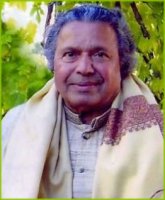 Watching strong tall trees fall after decades of giving shade and succour is always a heart wrenching moment. When a beloved artiste finally closes his eyes, the sight of a prone body never fails to cause a twinge in my heart. This time it was Kalakshetra veteran and to many of Kalakshetra alumni - the iconic Ravana – K P Kunhiraman. At almost 80 years of age, he returned to Chennai from California to live out his final days. Wife Katherine continued to nurture their dream through their academy ‘Kalanjali: Dances of India’ in Berkeley, CA. A dancer herself, she and I sat together in a small room with only the still form of Kunhiraman Sir as company while she shared memories of their time together. “He was all about the art. Never thought about himself.” Ill health aside, Kunhiraman was planning a comeback with a special appearance in the now famous San Francisco Ethnic Dance Festival that began 36 years ago. Katherine spoke of the very first year when her entry with the lamp was the premiere moment of the now famous multi-arts festival. This year, Kunhiraman Sir was selected to receive the award for his contribution to California’s arts heritage. “Too late,” Katherine rued but nevertheless, a recognition for a singular artiste. Peers, students, admirers trickled in and shared their memories of learning and performing with Kunhiraman Sir, a poignant moment for students, colleagues and fans of a true Kalakshetra titan. Another milestone from the Kalakshetra umbrella came by way of an 85th birthday for guru Sarada Hoffman. A true educationist, fiercely focused and totally immersed in her life as mentor and teacher at Kalakshetra, “Chinna Sarada Teacher” was the muse on whom Rukmini Devi set much of her famous choreography. A tender memory emerged from another veteran C K Balagopal who recounted Kunhiraman’s trembling hands when asked to touch Rukmini Devi. The incident occurred during the rehearsals of KUMARA SAMBHAVAM, where the title roles of Siva and Parvati were danced by Kunhiraman and Rukmini Devi. Listening to such snippets took me back, momentarily, to my early days of peering through the thatched walls of the Rukmini Arangham to watch the unfolding of the DASAVATARAM series in the mid 70s. Which brings me to a nagging question... With Kalakshetra being a national institution supported and managed by the Government of India, should there not be a more rigorous scrutiny of foreign tours and their remuneration packages? The forthcoming US tour of SITA SWAYAMVARAM is perhaps a substitute for director Priyadarsini Govind’s previously scheduled solo tour of several American cities. Speaking to a prominent presenter from New Jersey, I learned that the entire 30 member ensemble from Kalakshetra is performing for paltry sums of $3000 and $5000 per show! That is what solo dancers get from the NRI circuit? So who decides the norms and who subsidises the balance? If it is the Indian Government then why should Kalakshetra travel 10,000 miles to perform again for the Indian ghettoised audience, whose interests are rapidly moving away from dance shows? Should they not be looking at having a professional tour on the lines of other major dance companies in Europe and Asia? Questions float in the air like dandelions... After many years of being away from the limelight, she is back. I am speaking about Sonal Mansingh. For over a decade she was shunned by the Congress/UPA Government for being outspoken and denied many awards and performance opportunities. She morphed into a Sadhvi, storyteller and television guest. Her knowledge of Sanskrit, world literature, poetry and a wicked sense of humour have always fascinated younger dancers like this writer. With a new Commander in Chief in charge of India, Sonal Mansingh is getting active on social media. Her recent post on June 25th on Facebook was telling. On the 39th anniversary of India’s suspension of the democratic process – the Emergency, she wrote about the many years of being ignored and marginalised. I remember a 1991 incident in Mahabalipuram, outside Chennai. It was the premiere of the Mahabalipuram Dance Festival. The brainchild of dancer Lakshmi Vishwanathan, the first year was produced by ABHAI, whose president was Sudharani Raghupathy. Against the magnificent backdrop of the Arjuna’s Penance frieze and Thota Tharani’s tasteful backdrop, Sonal Mansingh danced superbly. Dances on Devi and Krishna, with a ‘swaralaya’ on the many notes of the SRI RAGA were particularly memorable for this dancer. Later, at a quiet dinner she rued the fact that she did not have a single national award. 23 years later, the story has a different script. And now, at age 70, we can expect this dynamic artiste to continue to surprise us. Sonal has always stated that dancers are not a-political. Choosing to be a dancer is a political statement in itself. And on the topic of social media, I was stunned with the power of Twitter. The incident was an altercation with a tele-marketer representing a prominent hotel chain. Offered a dining points based membership, I was told that the additional card I was entitled to could only be given to a spouse! This got me irritated and a Facebook posting followed. Designer and friend Wendell Rodricks shared the twitter handle of the head honcho from Delhi. My tweet got an immediate response and the matter was resolved in a day. Wow! But continuing on the subject of singletons, consumer research the world over reveals that single people spend more on entertainment and dining than married couples. Then why would anyone in 2014 discriminate against singles, live-ins, same sex couples, divorced, widowed citizens who wish to dine, travel and spend? Dancers will recognise the single life well. Many of us travel alone, and stay in hotels and dine in solitude. Even in my city, restaurant owners are waking up to the single woman diner phenomenon. So wake up ITC and get with it! 15 years ago, we launched this portal. Now we are looking at a reboot. Announcing with delight - drum roll please - NARTHAKI on PINTEREST. You can click or move your finger across your I-devices to look at great images and moments on our new page. Your comments about my ROVING EYE column are heartening. I travel often and see so much and am happy that many of you respond to my varied interests. Thank you. This month I bring you images of the exquisite exhibition that recently closed in New Delhi’s National Museum. RUPA-PRATIRUPA: THE BODY IN INDIAN ART, curated by Naman Ahuja of JNU, is a landmark in India’s museum history. From the selected images you can get a glimpse of the range and quality of the exhibits and the multiple layers of enquiry that has gone into this memorable experience. Keeping the body as the central image of discourse, the exhibition explored many dimensions of the supernatural, maternal, the camera lens - as ascetic, as fecund, heroic and art object. I spent more than four hours roaming the floors and revisiting many of the images. I wish there was an internet visit APP that many other museums the world over now have. So many ideas for choreography and research were gleaned from the thought process of other disciplines. 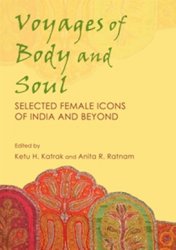 And finally, our book is out. VOYAGES OF BODY AND SOUL: SELECTED FEMALE ICONS OF INDIA AND BEYOND. Published by Cambridge Books, UK, it was a superhuman effort led by Dr Ketu Katrak and yours truly. The handsome volume contains articles from scholars and performers of the two landmark conferences I had the privilege to curate and convene - MAD AND DIVINE (2011) and EPIC WOMEN (2012). For all those who participated and for others who are interested in reading about academic and artistic processes, this is a must read. Whew! The effort a book takes! More than giving birth! July is the month for PADME – dance exploration I began many years ago to look at ways in which classically trained dancers can move beyond the paradigm of guru and sishya. The 7 young Bangalore based dancers embark on their final phase of rehearsals and choreography under the artistic eye of Kalpana Raghuraman (of FRIDA fame!) and the effort will be premiered in Bangalore early next month. Alongside this India premiere will be another debut. Pianist and composer Anil Srinivasan presents sound, word and imagination in a section called FLOAT. Images and more about the evening on this site and on our new PINTEREST page. I resume my travels but not for long. Meanwhile, stay well and stay connected to your art in this age of distraction. As India cools down, the West heats up. Down Under freezes and the world continues to heave with daily debacles. Art focuses us and keeps us centred. At least we hope it does. For if not why are we in this special sphere? Dr Anita R Ratnam Chennai/ Chicago Twitter: @aratnam Facebook: Anita R Ratnam Instagram: @anitaratnam Blog: THE A LIST / anita-ratnam.blogspot.in |